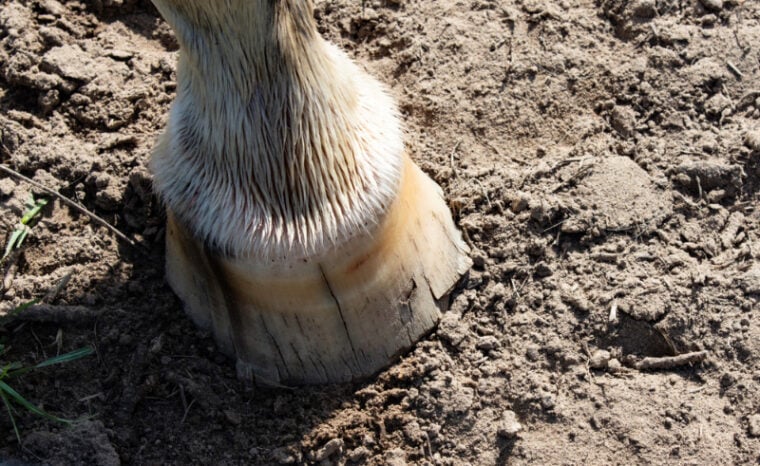
Click to Skip Ahead
Your horse has a crack that you’ve just noticed in their hoof. The crack might run up and down or side to side, and you might see more than one, depending on the state of your horse’s hooves.
Is it something to be concerned about, or will it grow out as your horse’s hooves grow? Let’s dive into the world of hoof cracks in horses.
What Are Hoof Cracks in Horses?
Hoof cracks are just that, a crack in the hoof wall. Hoof cracks are often not associated with lameness or any real issues for your horse. In some cases, however, they can be related to limping. Cracks can also occur after abscesses or cause infections in the hoof to form.
There are a variety of hoof cracks in horses, and they go by several different names, including:
Cracks are typically named based on the location of the hoof where they occur, but they might not seem logical. For instance, a grass crack forms from the toe of the hoof, while a sand crack forms from the top of the hoof near or at the coronet band.
Heel and toe cracks are readily apparent; they form at the heel or toe, respectively. You’ll find quarter cracks on either side of the hoof.
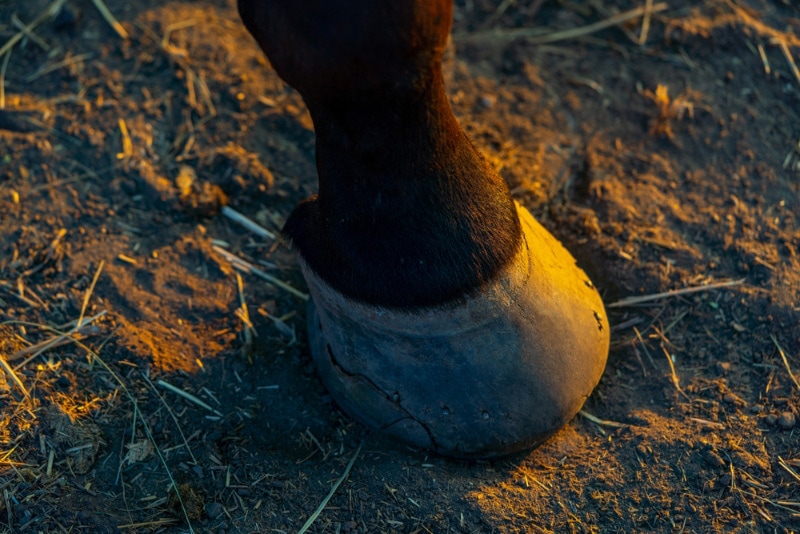
What Are the Signs of Hoof Cracks in Horses?
The main sign of a hoof crack is a readily visible crack in the wall of your horse’s hoof. The crack may be vertical or horizontal. The horizontal cracks are usually associated with the coronet band and abscesses.
Your horse may limp due to the crack, but that’s not always true. If your horse is limping, you should call the veterinarian out to examine your horse and see if something is going on besides the crack and what sort of treatment may be necessary.
What Are the Causes of Hoof Cracks in Horses?
Hoof cracks form for a variety of reasons. Ranging from factors you can’t control, like genetics, to ones you can, such as proper trimming, cracks may be caused by multiple factors:
Quarter cracks form when the hooves are unbalanced, such as abnormal conformation or a bad shoeing job. The weight of your horse gets unevenly distributed, and the hoof cracks.
Toe cracks usually form when the hoof overflexes while the horse is moving. This problem may occur when the horse has a long pastern.
Heel cracks usually develop when your horse doesn’t have shoes that fit well. In this case, the heel of the hoof isn’t effectively supported, so the pressure of your horse’s movements causes a crack near the heel.
Some hoof cracks will form secondary to an abscess that erupts through the hoof. It’s important to note that sometimes, a crack will develop first. Then bacteria invade and lead to an infection and possibly an abscess.
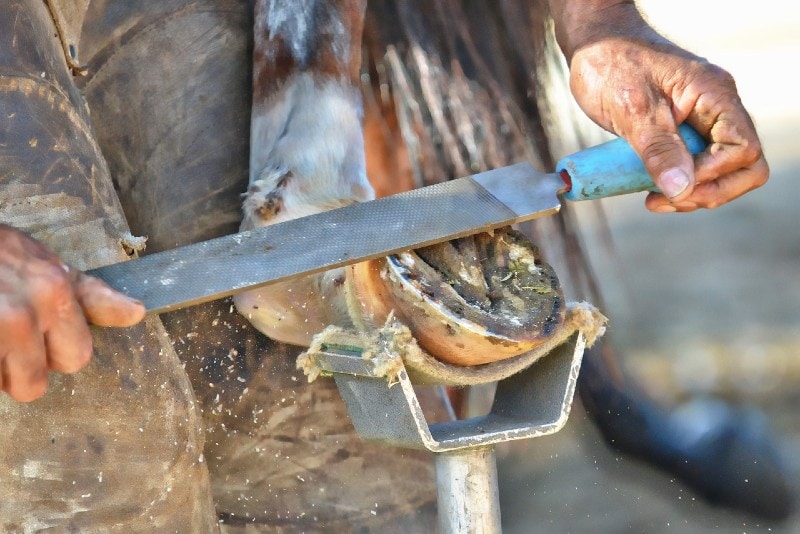
How Do I Care for a Horse With Hoof Cracks?
The best course of treatment for hoof cracks depends on where the crack is and how deep and extensive it is. Typically, you’ll need to give the hoof time to grow out while supporting the hooves with effective trimming and shoeing.
Because quarter cracks are usually conformation-based, your farrier will need to trim and shoe the horse to support the hoof. They may glue or patch the crack to support it. Your farrier will want to trim your horse’s toes a bit shorter if they have toe cracks.
Farriers often use bar shoes to support hooves with cracks. They may need to stabilize the hoof with techniques such as lacing the crack with wires if there’s a severe crack. Interestingly, your farrier can also stabilize the hoof with material like acrylic. They can use fiberglass on severe cracks.
Hooves need plenty of time to grow out, particularly if the crack is up high on the hoof. The hoof usually takes about 12 months to grow out completely. While the hoof grows, you will likely need to have the farrier out more frequently to keep up with hoof support. You’ll need to watch out for instability around the crack because the farrier may need to remove the loose piece of hoof and brace it with a shoe.
If your horse is lame, your vet will likely prescribe a pain medication to help your horse feel more comfortable. If there’s a deep crack that is infected, antibiotics may also be necessary.
Can I Prevent Hoof Cracks in Horses?
Some horses are more at risk for developing hoof cracks based on their conformation and hoof strength. After all, a strong hoof is less likely to crack under pressure than a thinner or weaker hoof.
Regular and proper shoeing is one of the best ways to compensate for your horse’s conformation and gait. A good farrier is worth their weight in gold. You’ll want to schedule appointments roughly every 4 to 6 weeks, depending on the season and how fast your horse’s hooves grow.
You should be regularly picking your horse’s hooves and cleaning them. Rocks embedded in the grooves around the frog can cause cracks or alter your horse’s gait, potentially leading to cracks. Doing this simple task also helps you check for other hoof issues that can cause cracks and lameness, such as the following:
Talk to your vet and make sure your horse eats a balanced diet for their size, age, and lifestyle. You may need to supplement the diet depending on what you’re feeding and even your hay and grass quality. (Some areas lack sufficient nutrients like selenium.)
Also, try to prevent repetitive stress injuries. Provide enrichment and exercise so your horse can avoid bad habits like stomping their feet. It can also be helpful to use adequate fly spray and environmental control measures to ensure flies, gnats, and other bugs don’t bother your horse.
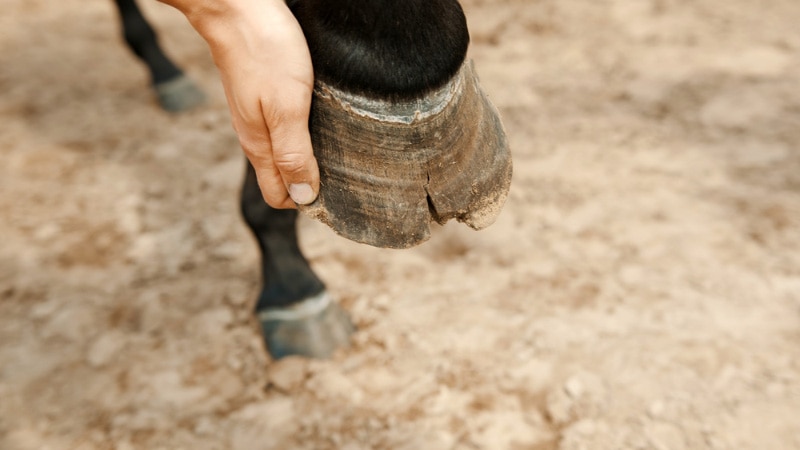
Frequently Asked Questions (FAQ)
Can the weather cause hoof cracks in horses?
The weather and environment can contribute to hoof cracks. If your horse constantly fluctuates between a damp, muddy environment and a dry environment, they’re in danger of the hoof cracking.
When it’s wet, your horse’s hooves absorb some of the moisture and swell. As they dry back out, the hooves contract. If this process continues, the hoof weakens, but it can also loosen your horse’s shoes, both of which can cause cracks.
Can diet contribute to hoof cracks?
What your horse eats can influence if they develop hoof cracks. For instance, a horse with a vitamin A deficiency may have thin hoof walls that flake easily, allowing them to crack much easier than a healthy hoof.
Selenium is a tricky nutrient. Your horse should ingest at most 2 to 3 milligrams daily, so you must be very careful if you give them additional sources of selenium. An overdose of selenium can lead to hoof wall defects, a crusty coronet band, and even cracks.
Other nutrients and minerals may impact your horse’s hooves. A calcium-to-phosphorus imbalance can also lead to weakened hooves.
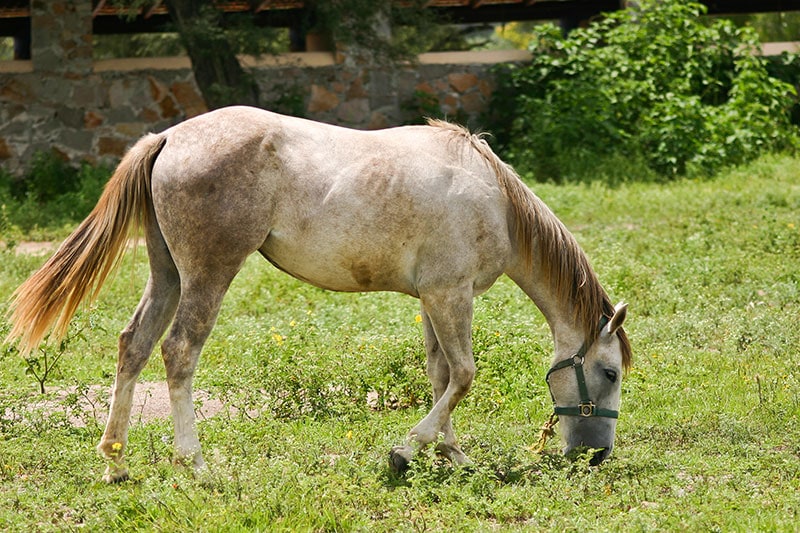
Conclusion
Hoof cracks come in many sizes and locations, and they can vary in their severity. While not all cracks are emergencies, they do need to be checked out thoroughly and monitored carefully.
If you notice a hoof crack, contact your farrier or veterinarian for the best advice on how to proceed. They’ll help you develop a treatment plan to get you back in the saddle.
Featured Image Credit: JNix, Shutterstock










